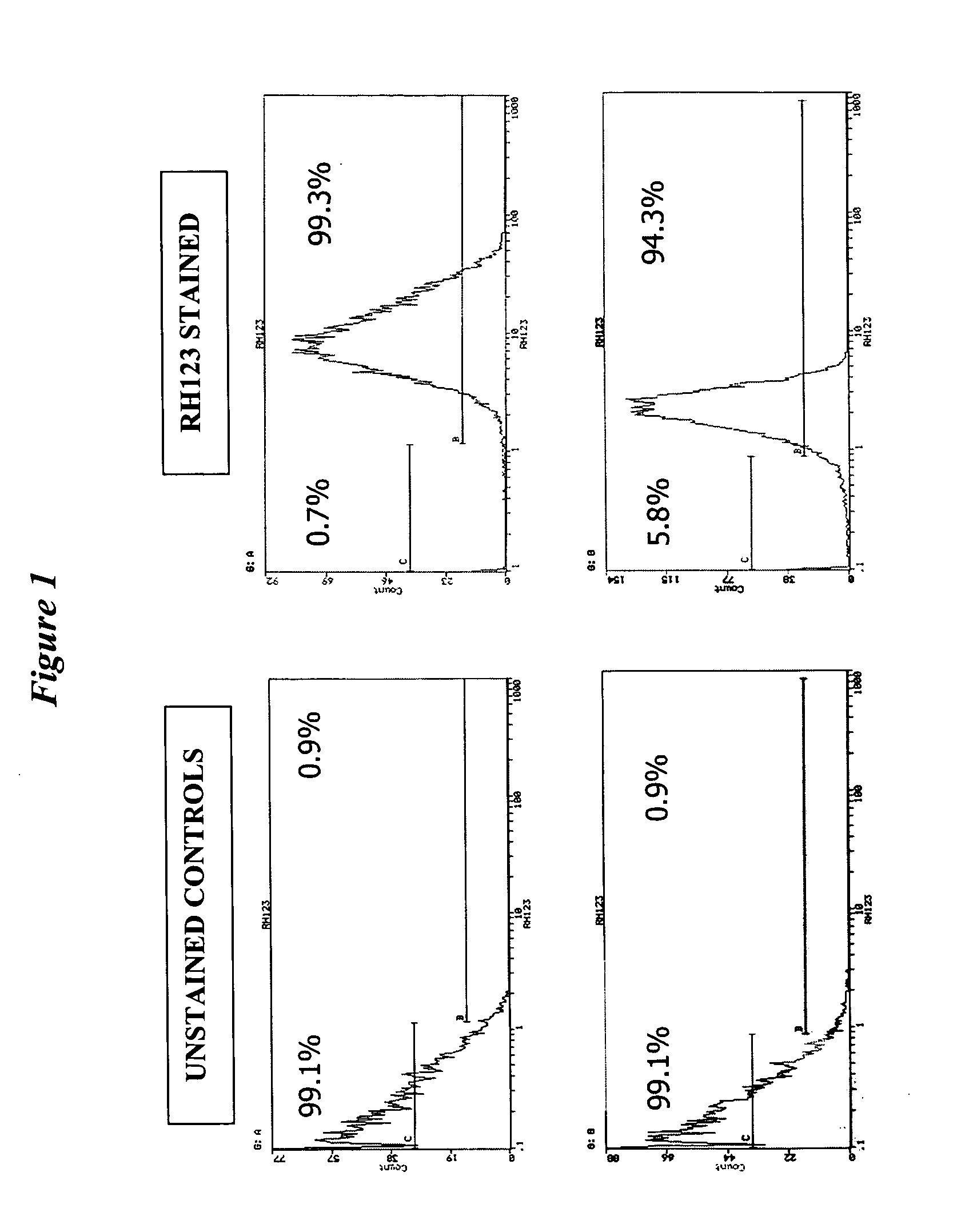Determination of cell viability
a cell viability and cell technology, applied in the field of cell viability determination, can solve the problems of unsatisfactory need to evaluate cells without significant delay, and achieve the effect of accurate and straightforward quantification of viable cells
- Summary
- Abstract
- Description
- Claims
- Application Information
AI Technical Summary
Benefits of technology
Problems solved by technology
Method used
Image
Examples
example 1
[0057] Materials and Methods
[0058] All materials may be obtained from any suitable source, including those available from multiple commercial entities. Many pre-dyes are available from Molecular Probes as well as other vendors.
[0059] IntraCyte-Fix™ from the IntraCyte™ Intracellular FACS Kit available from Orion Biosolutions (Vista, Calif.) may be used as the fixative in the following.
[0060] General Protocol
[0061] For cells that are not normally in suspension, prepare single-cell suspension by enzymatic digestion or dissociation, preferably sufficiently mild to minimize cell damage. As a non-limiting example, adherent cells may be incubated cells with trypsin / EDTA in a buffered salt solution at physiological pH, such as by use of trypsin / EDTA in Hank's Balanced Salt Solution (HBSS) without Ca++ / Mg++ or phenol red (Sigma Cat. # H-6648). Trypsin may be present from 0.2 to 0.01% (w / v) while EDTA may be present from 0.02 to 0.001% (w / v) as non-limiting examples.
[0062] In cases of or...
example 2
[0070] Determination of Human Dermal Fibroblast Viability
[0071] Primary human dermal fibroblasts (approximately 95% viable by trypan blue dye exclusion) were treated essentially as described in the previous example with or without addition of pre-dye (dihydrorhodamine 123) and with or without treatment with IntraCyte-Fix™ from the IntraCyte™ Intracellular FACS Kit available from Orion Biosolutions (Vista, Calif.).
[0072] The results are shown in FIG. 1, where the horizontal axes are rhodamine 123 fluoresence and the vertical axes are cell counts. The two upper panels show the results without use of fixation while the two lower panels show the result post fixation. Prior to FACS, cells in the upper panels were washed with PBS in the absence of detergent to prevent undue leakage of dye from the cells, while cells in the lower panels were washed in the presence of about 0.1% Tween-20.
[0073] As can be seen from the two lower panels, cells that were viable stained well with rhodamine 1...
PUM
 Login to View More
Login to View More Abstract
Description
Claims
Application Information
 Login to View More
Login to View More - R&D
- Intellectual Property
- Life Sciences
- Materials
- Tech Scout
- Unparalleled Data Quality
- Higher Quality Content
- 60% Fewer Hallucinations
Browse by: Latest US Patents, China's latest patents, Technical Efficacy Thesaurus, Application Domain, Technology Topic, Popular Technical Reports.
© 2025 PatSnap. All rights reserved.Legal|Privacy policy|Modern Slavery Act Transparency Statement|Sitemap|About US| Contact US: help@patsnap.com

